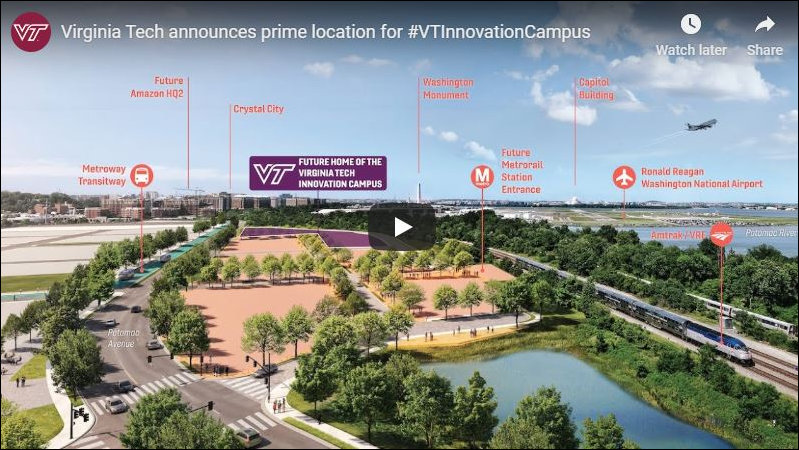
Billion dollar baby. You know Virginia Tech has made the big time when its projects hit the $1 billion mark. That’s how much Tech’s innovation campus in Alexandria, which is tied to Amazon’s HQ project, will ultimately cost. The first phase, a 300,000-square-foot academic building, will cost a mind-bending $275 million, reports the Washington Business Journal. (If it’s any consolation, that figure does include the cost of furniture.) Eventually, the campus will total 1 million square feet of space, including incubator space for new startups, offices for industry collaboration, and convening space for alumni events as well as ground-floor retail “knitting the campus into the fabric of Alexandria.”
VCU R&D Hits Record. Virginia Commonwealth University, Virginia’s third-ranked research university, raised a record $310 million in sponsored research funding in fiscal year 2019, reports Virginia Business. The number represents a 14.6% increase from the previous year. The top recipient was the Center for the Study of Tobacco Products, which will launch a five-year study predicting outcomes of government regulations of tobacco products, including e-cigarettes.
Enrollment up at UVa and W&M. Fall 2019 enrollment numbers are coming in for public universities, and the news is good — at least for the top-tier institutions, according to this Forbes magazine tally. Here in the Old Dominion, the University of Virginia reports a first-year class size of 3,920 students, an increase of 80. Despite aggressive tuition increases in recent years, the College of William & Mary reports anticipated enrollment holding steady around 1,540, down only six students from the previous year. So far, falling college enrollments have hit mainly community colleges and small liberal-arts institutions.
— JAB

Leave a Reply
You must be logged in to post a comment.